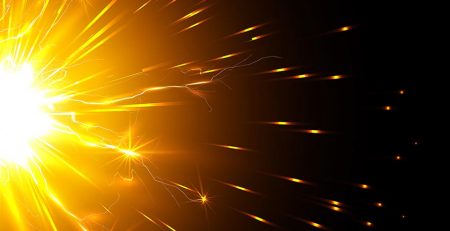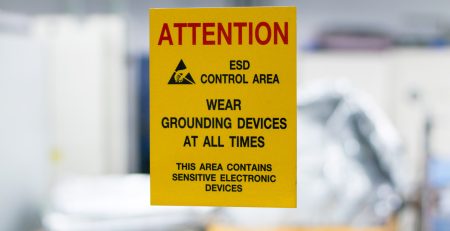How Does Weather Affect Static Electricity?
Static electricity is problematic in many workplace settings under any conditions, but it is also essential to understand how changes in the weather can impact the prevalence of static electricity. Understanding how static works and the conditions under which it is likely to occur plays a big role in combatting the issue. Today, we’re going to discuss how and why the weather affects static electricity and the steps that can be taken to ensure it cannot disrupt workplace processes, products and people.
 How Temperature and Humidity Affect Static
How Temperature and Humidity Affect Static
Static electricity can be generated at any time of the year since the process of a surface becoming positively or negatively charged through friction is not dictated by the seasons. However, static electricity and electrostatic discharge are more prevalent in winter. You may even notice this in a domestic setting; walking across a carpet removing a layer of clothing is more likely to result in a static shock in winter than summer.
This increase of static build-up in winter is linked to relative humidity. Air holds less moisture at colder temperatures than warm and humid in the summer. Moisture assists in conducting electrical charges, so a lack of moisture in the air creates the perfect environment for static electricity to build – prompting the need for anti static solutions.
Understanding How Humidity Affects Static Electricity
Relative humidity is the measure of water vapour content in the air. It is expressed as a percentage of the water vapour needed to achieve saturation at the same temperature. When relative humidity is high, there is a higher water vapour concentration. The water molecules coat surrounding surfaces and materials, acting as a lubricating electrical conductor and minimising the friction required to generate static electricity. This allows electrons to pass freely between materials, which results in less static electricity build-up.
In contrast, when relative humidity is high, the absence of water molecules on surfaces makes static build up much easier. This is because the electrons have nowhere to go, so they sit on the material’s surface, waiting to discharge.
 Seasonal Differences
Seasonal Differences
As discussed, static electricity is more prevalent in winter. As a general rule, air tends to be much dryer and colder in winter than summer, resulting in low humidity and the perfect conditions for static to thrive. Central heating systems also enhance the issue. When we use central heating to warm a space in winter, the process heats and dries the air, reducing humidity even further and promoting static electricity build-up.
This is not to say that static electricity isn’t an issue during summer or when it is raining. Although external humidity is likely to be higher in summer when the air is warm and moist. If you are using air conditioning to cool your space, you will be introducing dry air and helping to cultivate ideal conditions for static activity to build. For this reason, it’s essential to monitor and address the humidity levels in your workspace all year round.
Tackling Weather-Related Static Issues
We cannot control the weather, but steps can be taken to control humidity and static build-up within a specific environment, such as a factory, manufacturing line or workspace where intricate electronics are handled.
One solution is to install a humidifier. A humidifier increases the water vapour content in the air, encouraging a thin, protective film of water vapour to form on surfaces a serve as a natural conductor to dissipate electrical charges. Humidifiers alone are often not enough, though. Electrostatic discharge is often invisible, and the damage it can cause to products – particularly electronic devices – may not even become evident until later in the product’s lifespan.
For this reason, it is always advised to take a two-pronged approach when addressing static electricity issues. Humidity control should be used in tandem with static control equipment to mitigate further the threats static electricity can have in workplace settings.
 Using Static Bars to Combat Weather-Related Static
Using Static Bars to Combat Weather-Related Static
Workplace issues with static can manifest in many forms, from nuisance static shocks to workers, production line disruptions, material jamming and unwanted dust and dirt clinging to product materials. A static electricity eliminator from Ioniser Pro provides a year-round, permanent solution to the issues presented by static build-up.
Our static bars work by releasing an electrical field into the surrounding area. This field encourages the breakdown of nearby molecules, separating them into positive and negative ions and allowing charged particles in the vicinity to attract and neutralise. This method of static control is versatile, adaptable, and can be localised to specific problem areas. Whether used alone or in partnership with robust humidity control, these preventative measures help to:
- Increase productivity
- Reduce waste from materials and components damaged by static discharge
- Improve working conditions for both machinery and workers
How much we allow weather to dictate the risks of static build-up is down to the way we control our indoor climate. With the right controls in place, it is possible to eliminate the issues posed by static in the workplace, no matter the season. If you would like more information about how Ioniser Pro can help, contact us today.

 How Temperature and Humidity Affect Static
How Temperature and Humidity Affect Static Using Static Bars to Combat Weather-Related Static
Using Static Bars to Combat Weather-Related Static








